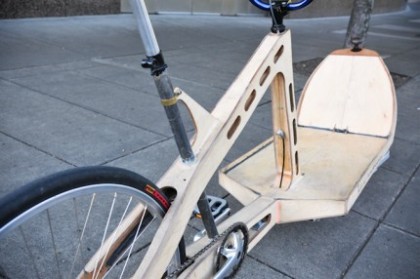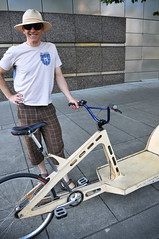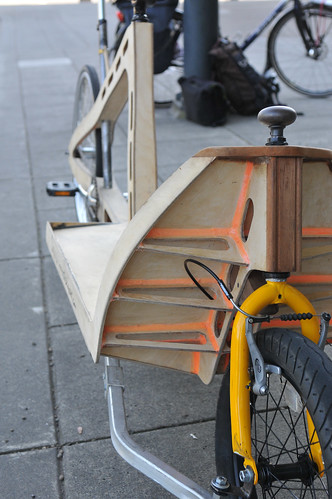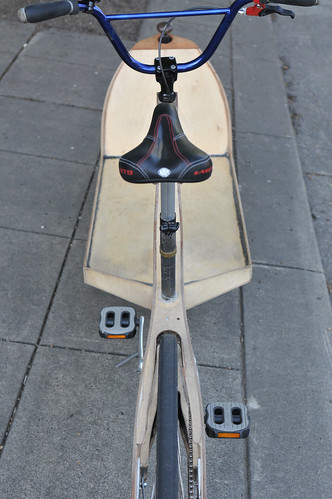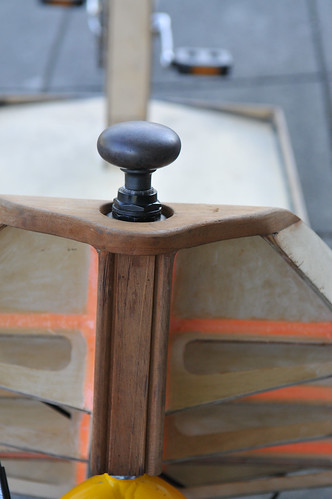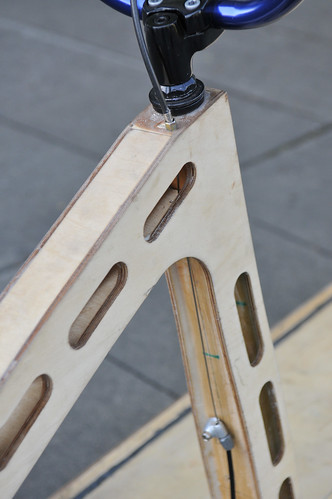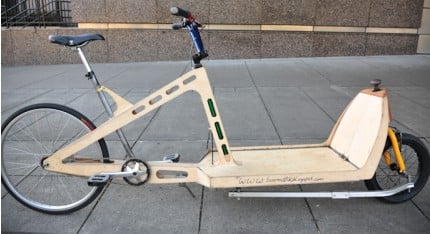
When local industrial designer Michael Downes heard that the Oregon Manifest Design Challenge was back again this year, he knew he wanted to enter. Downes, a former bike designer for Giant who now teaches design at the Art Institute of Portland, had a novel idea for the “ultimate utility bike.” He wanted to make a cargo bike out of wood.
Downes pitched the idea to his friend and neighbor Jeff Sayler, a fellow cargo bike fan who also happens to be an expert wooden boat builder “He said, yeah let’s do it!” Downes recalls.
Over the past several months, Sayler and Downes — who’ve dubbed their collaboration Art & Industry — have completed their prototype for the Manifest competition; a striking, Bakfiets-style cargo bike made entirely out of 1/4-inch birch plywood. I ran into Downes the other day and we chatted about the project.
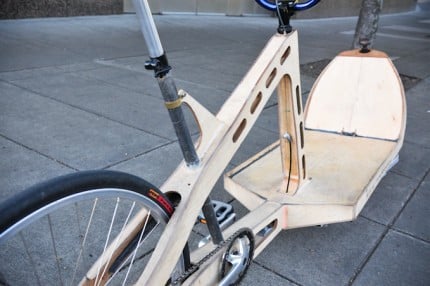

“The collaboration with Jeff [Sayler] has been phenomonal… We trust each other’s skills. He knows wood structure and I know bikes, so we’ve got this great synergy… It’s going really well.”
“We felt we could get away with using wood more with a cargo bike because there’s not an archetype yet; what a cargo bike is is kind of open right now.”
Downes said he wanted to work with wood all along and that he arrived at doing a cargo bike because a standard bike “would be a challenge aesthetically.” “We felt we could get away with using wood more with a cargo bike because there’s not an archetype yet; what a cargo bike is is kind of open right now.”

Beginning with the angles and measurements of the classic bakfiets, Downes and Sayler have created an impressive machine. The cargo bin and the main frame are all one piece (“The frame is the box is the cargo bike” is how Downes puts it). The only non-wood parts (besides the components of course) are the seat tube, steering tube, head tube and dropouts.
The plywood was cut out on a CNC machine and then slotted together into a series of ribs that are glued together with an epoxy resin mixed with chalk. The resin is then mixed “into a goop” and “mushed into fillets,” explains Downes. The result is a very strong bike that is also lightweight. Add in Downes’ design skills and you’ve got a very viable bicycle.
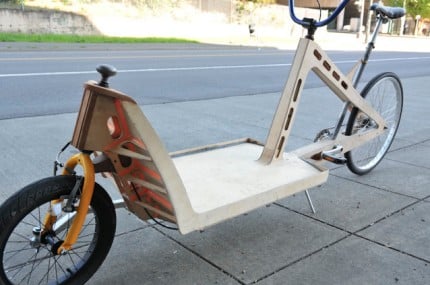
“It weighs 51 pounds, which is light for a cargo bike,” Downes says proudly, “It also climbs well and has a super comfy ride.”
The final version will feature many refinements. Downes says we can expect to see hatches and storage compartments in the cargo bin, as well as built-in lights and a sound system for good measure.
Downes and Sayler have a blog that has chronicled their project. Check it out at Boomstik.blogspot.com. These two are just one of many talented teams pushing the utility bike boundaries for the Oregon Manifest Design Challenge. We can’t wait to see what others come up with!
